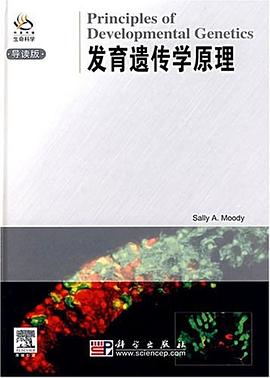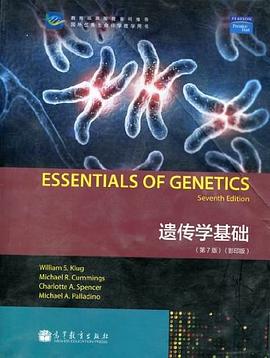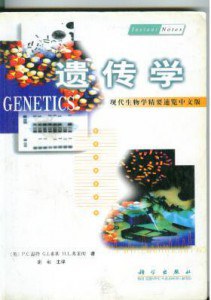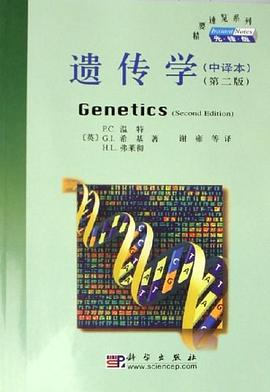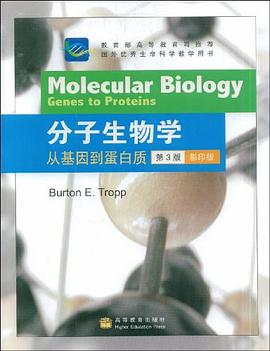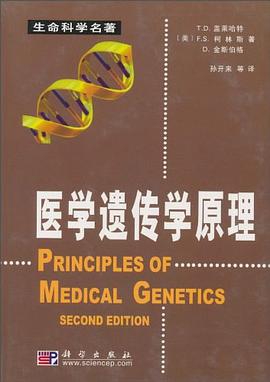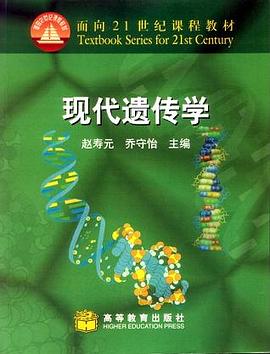

具体描述
This revised edition introduces evidence that symbiogenesis is a major source of evolutionary innovation leading to the origins of new species. The author offers insights into the genetic and metabolic interactions of the bacterial comunities that became protocists. Among these diverse organisms, the earliest eukaryotes, including some that are fossilized in the Proterozoic record, are those that then evolved to become animals, plants and fungi. The book presents a perspective on evolution during the Archaen and Proterozoic eons of pre-Phanerozoic time, with consequences for taxonomy. A single dipartite phylogenetic tree includes all major groups of organisms.
作者简介
Lynn Margulis, Distinguished University Professor in the Department of Geosciences at the University of Massachusetts at Amherst, received the 1999 National Medal of Science from President Bill Clinton. She has been a member of the U.S. National Academy of Sciences since 1983 and of the Russian Academy of Natural Sciences since 1997. Author, editor, or coauthor of chapters in more than forty books, she has published or been profiled in many journals, magazines, and books, among them Natural History, Science, Nature, New England Watershed, Scientific American, Proceedings of the National Academy of Sciences, Science Firsts, and The Scientific 100. She has made numerous contributions to the primary scientific literature of microbial evolution and cell biology.
Margulis's theory of species evolution by symbiogenesis, put forth in Acquiring Genomes (co-authored with Dorion Sagan, 2002), describes how speciation does not occur by random mutation alone but rather by symbiotic d©tente. Behavioral, chemical, and other interactions often lead to integration among organisms, members of different taxa. In well-documented cases some mergers create new species. Intimacy, physical contact of strangers, becomes part of the engine of life's evolution that accelerates the process of change. Margulis works in the laboratory and field with many other scientists and students to show how specific ancient partnerships, in a given order over a billion years, generated the cells of the species we see with our unaided eyes.The fossil record, in fact, does not show Darwin's predicted gradual changes between closely related species but rather the "punctuated equilibrium" pattern described by Eldredge and Gould: a jump from one to a different species.
She has worked on the "revolution in evolution" since she was a graduate student. Over the past fifteen years, Margulis has cowritten several books with Dorion Sagan, among them What is Sex? (1997), What is Life? (1995), Mystery Dance: On the Evolution of Human Sexuality (1991), Microcosmos: Four Billion Years of Evolution from Our Microbial Ancestors (1986), and Origins of Sex:Three Billion Years of Genetic Recombination (1986).
Her work with K.V. Schwartz provides a consistent formal classification of all life on Earth and has lead to the third edition of Five Kingdoms: An Illustrated Guide to the Phyla of Life on Earth (1998). Their classification scheme was generated from scientific results of myriad colleagues and its logical-genealogical basis is summarized in her single-authored book Symbiosis in Cell Evolution: Microbial Communities in the Archean and Proterozoic Eons (second edition, 1993). The bacterial origins of both chloroplasts and mitochondria are now well established. Currently, with colleagues and students, she explores the possible origin of cilia from spirochetes.
Since the mid-1970s, Margulis has aided James E. Lovelock, FRS, in documenting his Gaia Theory, which posits that the Earth's surface interactions among living beings, rocks and soil, air and water have created a vast, self-regulating system. From the vantage of outer space the Earth looks like an amazing being; from the vantage of biochemistry it behaves in many ways like a giant organism.
目录信息
2. Diversity : Classification and evolution ; Prokaryotes and eukaryotes ; Five kingdoms --
3. Cell evolution in perspective : Direct filiation ; The botanical myth ; Disreputable theories of cell symbiosis --
4. Before cells : The geological context ; The cosmic cooker: nonbiological organic compounds ; Meteorites ; Making life in the laboratory --
5. Evolution before oxygen : Criteria for relatedness ; Anaerobic innovations ; The pre-Phanerozoic fossil record --
6. Atmospheric oxygen from photosynthesis : Aerobiosis in microbes ; Clues from organic geochemistry ; The Proterozoic fossil record.
7. Symbioses in evolution : Interactions in nature; symbiosis as parasexuality ; From symbionts to organelles ; Paradigm symbioses ; Genetic analysis of symbiosis, some terminology --
8. Aerobiosis and mitochondria : Mitochondria: acquisition by whom? ; A pathogen becomes an organelle: a mitochondrial analogy ; Mitochondrial mutants ; Promiscuity in yeast mitochondria ; Refining and interfacing: the mix-match principle ; Cytoplasmic heredity: cells within cells ; Mitochondria and nucleocytoplasm: living happily ever after --
9. Undulipodia, mitosis, and meiosis : Protoctist cell division ; Microtubules, kinetosomes, and mitosis ; Toward mitosis --
10. Spirochetes and undulipodia : Symbiotic origin of microtubule systems? ; What are spirochetes? ; Spirochete behavior: free-living to symbiotic ; Motility symbioses ; Microtubules in prokaryotes? ; Origins of undulipodia and MC RNA --
11. Photosynthesis in plastids : Genetic continuity of plastids ; Chloroplast genes: the many genomes of plants ; Transition from symbionts to organelles: rare or common occurrences? --
12. Phanerozoic consequences : Calcium and skeletons ; Plants, animals, and chromosomes ; Gaia today: the extent of the biosphere
· · · · · · (收起)
读后感
评分
评分
评分
评分
用户评价
相关图书
本站所有内容均为互联网搜索引擎提供的公开搜索信息,本站不存储任何数据与内容,任何内容与数据均与本站无关,如有需要请联系相关搜索引擎包括但不限于百度,google,bing,sogou 等
© 2025 book.quotespace.org All Rights Reserved. 小美书屋 版权所有




